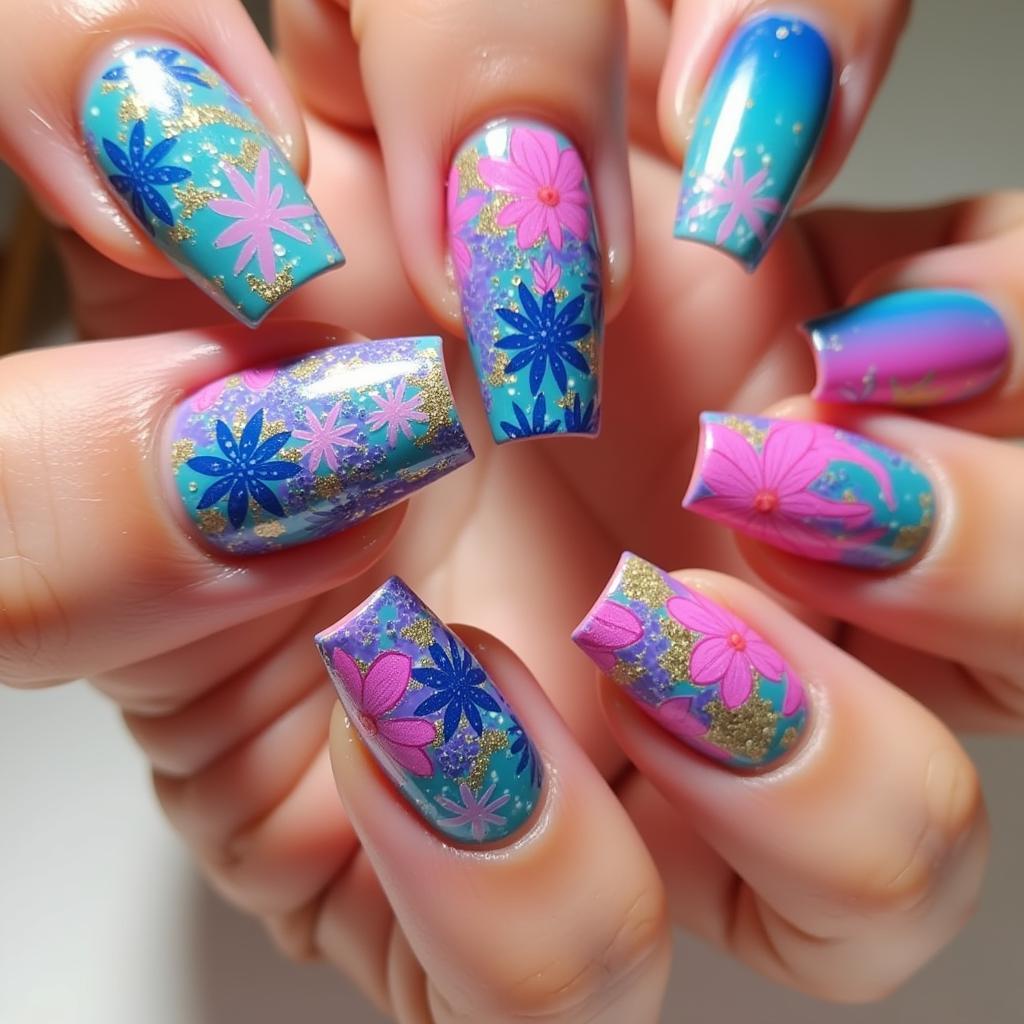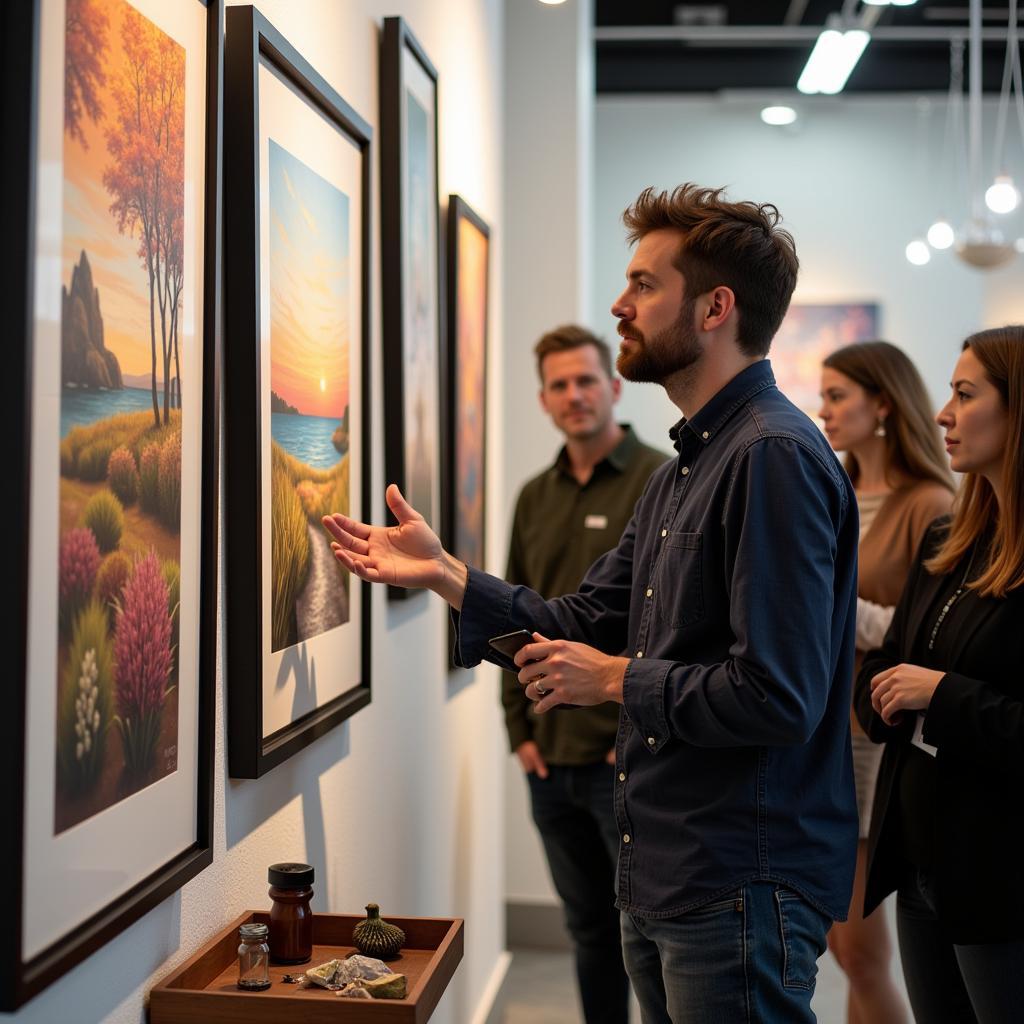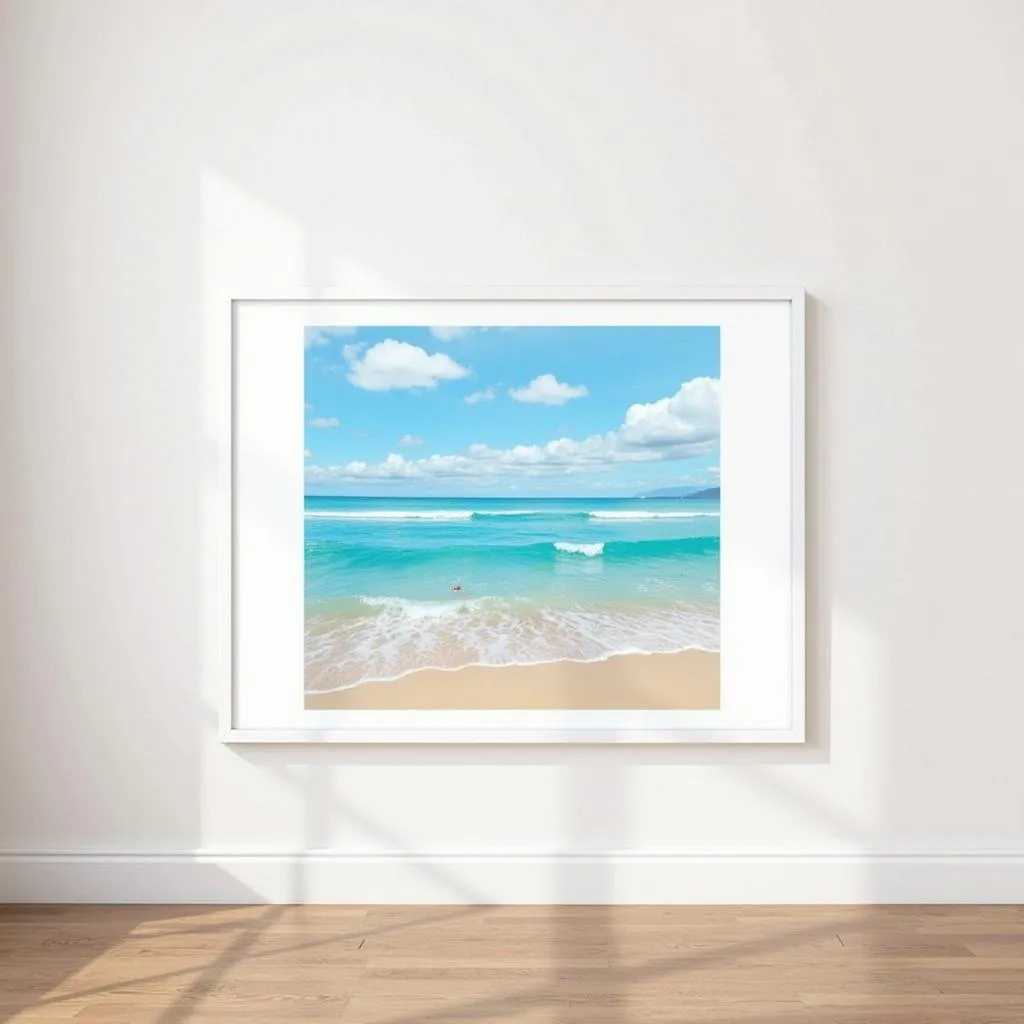Art Red: Unleash Your Creativity with Vibrant Hues
Red, the color of passion, energy, and power, has long captivated artists and designers alike. Its versatility and symbolic weight make it a staple in various art forms, from painting and photography to digital art and graphic design. In this exploration of “Art Red,” we delve into the profound impact of this vibrant hue on artistic expression and discover how you can harness its evocative qualities in your own creative endeavors.
Red in Painting: A History of Passion and Power
The use of red in painting spans centuries, echoing the color’s inherent association with fire, blood, and life itself. From the fiery reds of ancient Egyptian frescoes to the bold strokes of Renaissance masters, red has consistently played a pivotal role in shaping the narratives and emotions conveyed through art.
The Symbolic Significance of Red
Throughout history, red has been imbued with a wide range of meanings, making it a powerful tool for artists to communicate complex ideas and emotions.
-
Passion and Love: Red’s association with romance and desire is deeply rooted in our cultural understanding. Artists often use red to symbolize love, passion, and the intensity of human emotions.
-
Energy and Vitality: As the color of fire and blood, red embodies energy, vitality, and the life force. It conveys a sense of excitement, urgency, and dynamism, capturing the essence of movement and action.
-
Power and Authority: In many cultures, red signifies power, authority, and leadership. From royal robes to military uniforms, red has been used to symbolize strength, dominance, and control.
-
Danger and Warning: Red’s association with fire and blood also carries connotations of danger, warning, and aggression. Artists often use red to highlight moments of conflict, violence, or impending peril.
Famous Artists Who Mastered Red
Throughout history, many artists have become renowned for their masterful use of red in their work.
-
Vincent van Gogh: Known for his bold use of color and expressive brushstrokes, van Gogh often employed vibrant reds to capture the intense emotions and fiery landscapes he observed.
-
Mark Rothko: A pioneer of abstract expressionism, Rothko’s minimalist paintings often feature stark red rectangles, immersing viewers in a profound sense of contemplation and emotional intensity.
-
Andy Warhol: Warhol’s iconic pop art pieces frequently use vibrant red, embodying the commercialism, consumerism, and celebrity culture of the 20th century.
Red in Photography: Capturing Emotion and Atmosphere
In the realm of photography, red serves as a powerful tool for capturing emotion, creating atmosphere, and enhancing the visual impact of images.
The Emotional Power of Red
As with painting, red in photography evokes a range of emotions, depending on how it’s used.
-
Passion and Intensity: Red can be used to highlight moments of passion, intimacy, and emotional intensity, adding a sense of drama and excitement to images.
-
Energy and Movement: By strategically incorporating red elements into your compositions, you can convey a sense of energy, movement, and vitality.
-
Danger and Suspense: Red can also be used to create a sense of danger, suspense, and intrigue, adding a layer of mystery to your photographs.
Techniques for Capturing Red in Photography
-
Use Red as a Focal Point: Red is a powerful color that naturally draws the eye. Use it strategically to create a focal point within your compositions, directing the viewer’s attention to key elements of the image.
-
Embrace Dramatic Lighting: Red often appears more vibrant under dramatic lighting conditions. Utilize backlighting, side lighting, and soft lighting to enhance the richness and intensity of red hues in your photos.
-
Consider the Context: The meaning and impact of red can vary depending on the context in which it appears. Be mindful of how red interacts with other colors and elements within your images to create a cohesive and impactful composition.
Exploring Red in Digital Art: Pushing the Boundaries of Creativity
Digital art has revolutionized the way we create and experience art, offering unparalleled opportunities for artists to explore color in innovative ways. Red takes on a new dimension in the digital realm, allowing artists to manipulate its properties with unprecedented precision and creativity.
The Versatility of Red in Digital Art
-
Color Gradients and Blends: Digital tools allow for seamless color transitions, enabling artists to create intricate gradients and blends with red, resulting in captivating visual effects.
-
Textural Experiments: The digital medium facilitates the creation of unique textures, allowing artists to explore the interplay of red with various textures, from smooth and silky to rough and textured.
-
Interactive Installations: Digital art often incorporates interactive elements, giving viewers a more immersive and engaging experience. Red can be used to create visually striking and interactive installations that respond to user input.
Famous Digital Artists Who Master Red
-
Refik Anadol: Known for his mesmerizing data-driven art installations, Anadol often incorporates vibrant red hues, creating immersive experiences that explore the intersection of technology and art.
-
Casey Neistat: A renowned filmmaker and artist, Neistat uses red in his digital art to create visually impactful and emotionally charged animations, blurring the lines between digital and physical realms.
Harnessing the Power of Red in Your Own Creations
Red’s captivating power transcends art forms, inspiring artists across disciplines. Here are a few tips for incorporating red into your own creative endeavors:
-
Experiment with Red’s Hues: Explore the diverse range of red hues, from vibrant crimson and fiery scarlet to deep maroon and burgundy. Each hue has a unique character and emotional impact.
-
Consider Color Theory: Understand how red interacts with other colors on the color wheel. Use complementary colors to create vibrant contrasts or analogous colors for a more harmonious effect.
-
Embrace the Symbolism of Red: Explore the symbolic meanings associated with red and use them to inform your creative choices.
-
Seek Inspiration from Masterworks: Study the works of artists who have effectively used red in their art. Analyze their techniques, color choices, and the emotions they evoke.
-
Let Red Be Your Guide: Red can ignite your imagination and spark new ideas. Let its vibrant energy guide your creative process, pushing you to explore new possibilities and express yourself with boldness and conviction.
FAQs About Art Red
Q: What are some common color combinations with red?
A: Red complements blue and green, creating vibrant contrasts. It also pairs harmoniously with yellow and orange, creating warm and energetic combinations.
Q: How can I create a sense of depth and dimension using red in my art?
A: Use darker shades of red to create a sense of depth and recede into the background. Lighter shades of red tend to advance and draw attention.
Q: What are some alternative ways to use red in art besides painting and photography?
A: Red can be used in sculpture, ceramics, textiles, and even music to create captivating works of art.
Conclusion
From the fiery reds of ancient cave paintings to the dazzling hues of digital art, red has consistently captivated artists and audiences alike. Its vibrant energy, symbolic weight, and emotional resonance make it a powerful tool for expressing a wide range of ideas and emotions. Whether you’re a seasoned artist or a budding creative, embracing the power of red can unlock new possibilities and elevate your artistic expression to new heights.


